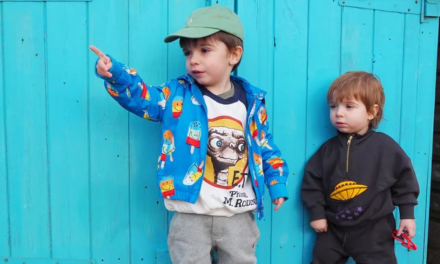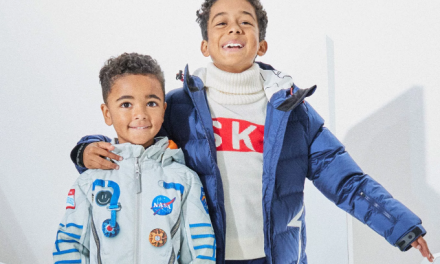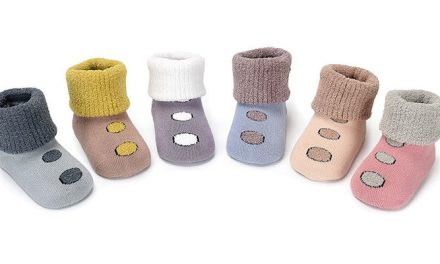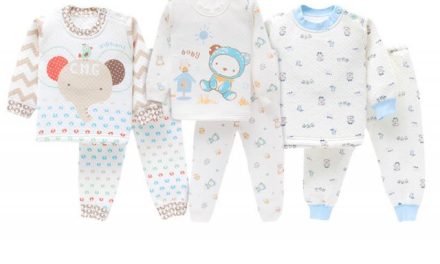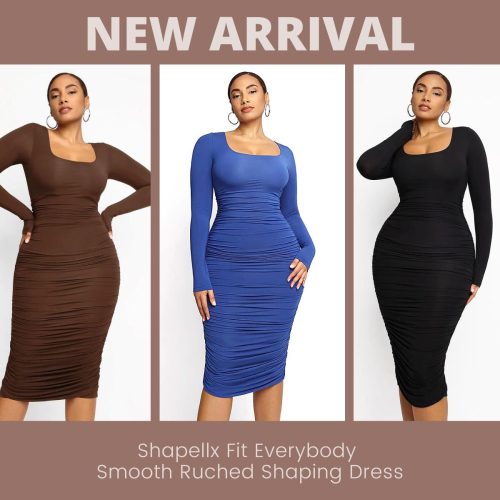1. Baby clothes
Baby clothing refers to clothing worn by infants under 36 months. At this time, the baby has delicate skin, a roughly round head, curiosity and incompetence, and random pulling. The style should be simple and loose, easy to take off and wear; The fabric should be made of natural fibers with strong water absorption and good breathability. Such as soft cotton or wool. The color is mostly light, warm or light pink, and there can be a little embroidery pattern appropriately. Never choose baby clothes made of hard materials and baby clothes with hard buttons.
2. Toddlers’ clothing
Toddler’s clothing refers to clothing worn by toddlers aged 2-5. At this time, the child is lively and active, with a round belly, a big belly, and a pleasant attitude. The style should be loose and lively, and local embroidery patterns of animals, words, flowers and plants, and characters can be used, and it is best to also be equipped with piping, inlaying, and pleating technology. Colors should be vibrant, dirt-resistant shades. The fabric is mostly made of wear-resistant, easy-to-wash cotton textiles, and the coat can also be made of soft and easy-to-wash chemical fiber fabric.
3. Children’s clothing
Children’s clothing refers to clothing worn by children aged 6-11. Children at this time grow rapidly, grow in their hands and feet, are mischievous, and have self-assertion. The style should be mainly loose, different between men and women, and can do some elastic. Colors can be in contrasting tones at the same time. The range of fabrics has been increased, both natural and chemical. The style of children’s clothing is varied and should be chosen according to the child’s personality. Children’s clothing can be further divided into three categories: children’s clothing, medium children’s clothing, and large children’s clothing.
4. Juvenile clothing
Shonen clothing refers to clothing worn by teenagers aged 12-16. At this time, the physical development of the teenager changed greatly, and the gender characteristics were obvious. They often have their own aesthetic hobbies, especially novel clothing, often ingenious. Style requirements are between children’s and youth’s. School uniforms are their most common clothing, clothing does not seek luxury but must have style in collocation, colorful and elegant, and local small decorations should be constantly renewed. The fabric is more made of chemical fiber materials. Because children grow quickly at this time and need to constantly update their clothing, don’t choose clothing that is too expensive. 【Detailed >>】
The number of children’s clothing sizes is divided into daily singles, European singles and legal singles, and daily orders are generally expressed in the form of 80, 90, 95, 100, 110, 120, 130, 140, 150, etc., indicating a suitable height; European orders are generally expressed in months of age, such as: 0-3M, 3-6M, 6-9M, 12M, 18M, 24, 3T, 4T, where M represents the month age, T or Y represents the age; The law list is generally expressed in the form of 60, 68, 74, 80, 86, 92, 104, 112, etc., which is equivalent to height.
General size for Chinese children’s clothing
Generally: big child: xl: 58-60cm; middle children: xl: 50cm; children: xl: 45cm; children: xl: 35cm. How can I choose a suitable children’s clothing for children? A convenient way is for the child to try it on directly or take an accurate measurement, but if the child is not present or cannot measure, only knowing the child’s height can still be calculated to choose the appropriate children’s clothing. In general, a child’s head accounts for 20% of the total height and the body height accounts for 80% of the total height. When choosing clothing for children, body height is usually the criterion. The length of children’s shorts is about 30% of their body height; The length of a child’s shirt is about 50% of the body height: the length of the child’s trousers is about 75% of the body height; Children’s jackets are equal to about 49% of body height; Children’s suits are about 53% long and equal to 53% of their body height; Children’s long clothes are equal to about 70% of their body height; A girl’s dress is equivalent to about 78% of her body height.
First, the design of baby clothes
The physiological characteristics of infants are lack of thermoregulation, easy sweating, frequent excretion, and delicate skin. Therefore, the design of baby clothes must pay great attention to hygiene and protection, clothes should be soft and loose, made of moisture-absorbing, warm and breathable fabrics, such as cotton gauze, flannel, knitted fabrics, etc. Another important point in the design of baby clothes is to emphasize the rationality of the structure, the structure should be simple, comfortable and convenient, pay attention to both the fit of the shape and the rational use of the buckle structure.
Second, the design of children’s clothing
The shape of young children is characterized by a large head, a short and thick neck, narrow shoulders and convex abdomen, and short and fat limbs. Therefore, children’s clothing design should focus on body shape, less use of waist line, and the outline is square, rectangular, and A-shaped. The bionic concept design in children’s clothing not only has a unique decorative role and interest, but also helps children to increase their knowledge, understand nature, and love nature. Children’s clothing often uses bright and lively contrasting colors and three primary colors, giving people a bright, eye-catching and relaxed feeling. In addition, the color blocks are inlaid and spaced, and the effect of lively, cute and rich colors can also be obtained. The fabric of children’s clothing can be used in summer with seersuckers, strip cloth, colored cloth, linen gauze and other cloths with good breathability and strong moisture absorption, so that children can wear cool. In autumn and winter, corduroy, yarn, twill cloth, etc. should be used with good warmth, washing and wearability.
3. Design of kindergarten clothes and school uniforms
Clothing design for childhood and adolescence should take into account the needs of school group life and be able to adapt to the characteristics of classroom and extracurricular activities. The style design should not be too cumbersome, gorgeous, eye-catching, generally using a combination of clothing, tops, blouses, vests, skirts, trousers and other combinations are appropriate. The design should not only adapt to the needs of the times, but also not too trendy or too much decoration. In addition, due to the large amount of children’s activities during this period, the design should consider the structural fastness of the style. The style design is too naïve and lively, and children are unwilling to accept it; The adult style looks serious and old, and loses the true characteristics of juvenile vitality.
4. Children’s clothing dressing design
Costumes are clothing suitable for children to wear on various festive occasions. Children are required to wear a different attire than their daily clothes when celebrating New Year’s Day, celebrating Children’s Day, participating in various ceremonies such as performances and concerts, and participating in ceremonial and recreational activities with their families. In modern society, children’s dressing has received more and more attention from parents.
1. Choose the style of children’s clothing
Jumpsuits, jackets, pants, sweatshirts, suits, t-shirts, dresses, etc. are all styles suitable for children.
2. Choose to pick fabrics for children’s clothing
Pure cotton: especially children are worn closely, then choose pure cotton is the best for small babies, such fabrics have strong moisture absorption, good dyeing performance, soft touch, comfortable to wear, will not produce static electricity, good air permeability, anti-sensitivity, simple appearance, firm and durable, easy to clean.
Cotton mercerized fabric: After the high concentration of caustic soda (wool) treatment, the cotton fabric of this fabric feels smooth, bright color, silky luster and comfortable to wear.
T/C fabric (polyester/cotton): This fabric is also not uncommon, it is made of fine or ultra-fine denier polyvinegar fiber and high-count combed cotton (40, 60, 80, etc.), the fabric feels structured, smooth and brightly colored. The body bones are elastic, moisture absorption and air permeability, the surface is smooth, and the most important thing is that it has a certain rainproof function.
Wool polyester fabric: refers to a fabric made of wool and polyester blended yarn. The common ratio of wool-polyester blending is 45:55, which can not only maintain the advantages of wool, but also play the advantages of polyester, wool and polyester blend, light texture, good wrinkle recovery performance. Strong and wear-resistant, easy to wash and dry quickly, dimensionally stable, pleated and long-lasting.
Small reminder: children’s clothing should give priority to pure natural fabrics, such as cotton, linen, silk, especially pure cotton fabrics are the first choice for children’s clothing fabrics.
3. Children’s clothing choices depend on age
Baby clothing: refers to the clothing of dolls within the age of one, babies are easy to sweat and love to pee, so choose baby clothes and diapers should choose pure cotton fabric, the simpler the style, the better, easy to put on and take off and change diapers.
Toddlers’ clothing: 1-5 years old children are characterized by large heads, short necks, bulging abdomen, popular and active, so the neckline of the clothes should be larger. In the late toddlers, children love to run and jump, in order to facilitate children to learn to put on and take off by themselves, the upper and lower clothes can be purchased in combination, and the opening is placed in the front.
School-age children: Clothing for school-age children aged 6-12 should focus on practicality and gregariousness, and the clothes should be firm and sturdy, and do a little embellishment. Choose the color of your child’s clothing to match the skin color. Try to avoid choosing clothing with thick and hard fabrics, wear children’s delicate skin, limit their activities, and affect children’s development.
4. Choose children’s clothing with heavy quality
Quality and safety: Choose children’s clothing to be soft, breathable, comfortable, safe and healthy. Avoid buying anti-wrinkle and bleached clothing for children.
Breathable and sweat-absorbent: Some beautiful clothes have a coating on the outer layer, which will affect the breathing of the baby’s skin after wearing, so do not choose.
Pattern print: Clothes are printed with cute cartoon patterns, if the pattern smells particularly odor (similar to the smell in the furniture city), do not buy.
Accessories: less buttons, zippers, buckles, pins, long ropes, etc., to prevent the baby from being injured by mistake. Accessories, buttons, snaps, etc.
Color color: You can’t choose too bright colors, because most of the fabric colors are dyed, and the dyes are irritating to the skin.
Logo content: whether there is a trademark and Chinese factory name, factory address, clothing number type logo, ingredient mark, washing logo and other symbols.
Darker skin tone, choose brighter, brighter, more energetic. If the skin color is white and bright, the range of clothing colors is wider, such as wearing pink, yellow or red clothes, people will look lively and bright, even if they wear gray and black, they will look delicate and elegant, giving people a comfortable and natural feeling.
2. Children’s clothing body shape and color matching
Fatter babies should choose cool or dark clothing, such as gray, black, blue and other colors, because this has a shrinking effect; If the baby is relatively thin, then choose some warm clothes for him, such as orange, yellow, beige, etc., which are expanded outward.
3. Style matching of children’s clothing
Children’s clothing styles should be loose and simple without too much decoration, but children’s clothing must have pockets that can be loaded with handkerchiefs and things that children like. Children’s clothing can be lengthened to allow for the next year. The sweater can be prepared in two sets, the small one can be worn close to the body, the large one can be worn outside as a cover, and it can be added to the cotton jacket when the weather is cold.
4. Fabric selection for children’s clothing
Lively and active is the nature of the baby, the baby is most of the time is playing, playing, so the dress should be loose and natural casual clothing. In addition, the baby’s body is developing, wearing loose and casual clothes, which is conducive to the development of the body and can also give people a comfortable and casual feeling.
5. Matching children’s clothing
Children’s clothing color and color matching
Darker skin tone, choose brighter, brighter, more energetic. If the skin color is white and bright, the range of clothing colors is wider, such as wearing pink, yellow or red clothes, people will look lively and bright, even if they wear gray and black, they will look delicate and elegant, giving people a comfortable and natural feeling.
Children’s clothing body shape and color matching
Fatter babies should choose cool or dark clothing, such as gray, black, blue and other colors, because this has a shrinking effect; If the baby is relatively thin, then choose some warm clothes for him, such as orange, yellow, beige, etc., which are expanded outward.
Style matching of children’s clothing
Children’s clothing styles should be loose and simple without too much decoration, but children’s clothing must have pockets that can be loaded with handkerchiefs and things that children like. Children’s clothing can be lengthened to allow for the next year. The sweater can be prepared in two sets, the small one can be worn close to the body, the large one can be worn outside as a cover, and it can be added to the cotton jacket when the weather is cold.
Fabric selection for children’s clothing
Lively and active is the nature of the baby, the baby is most of the time is playing, playing, so the dress should be loose and natural casual clothing. In addition, the baby’s body is developing, wearing loose and casual clothes, which is conducive to the development of the body and can also give people a comfortable and casual feeling.
1. Pay attention to the front of the store in store design. What kind of corporate image the customer has, what products are sold in the store, the door tells the customer at the first time. The door head is roughly divided into two parts, one is the design part, pay attention to the color and size ratio, consider whether the color matches the corporate brand image design requirements, and whether the relationship between the logo and the size of the door head is coordinated; The other part is the material part, simple inkjet painting is the work of small companies, and now the most popular is Ruyi Tiancheng production, which can increase the trust of customers.
2. Pay attention to the façade and the passage in the store. The use of glass doors, glass windows to improve perspective, with a sense of openness of the façade is easy to attract customers, the main passage of the store should be wide rather than narrow, let customers enter the main passage, you can clearly understand the specialty products of the store.
3. Pay attention to the classification pattern in store design. Product classification and zoning display is the focus of the pattern, and the location layout between regions and the comfort level of shopping will affect customer psychology. Shanghai store design believes that a good layout will make customers comfortable, feel closer to the product, in the store, the commodity area, negotiation area, image exhibition area is well designed in different regions, so that customers have a sense of fun, more invested in to promote purchasing power.
4. Pay attention to the scale of the display panel in the design of the store. The place to display the big sample should try to meet the customer’s vision, do not blindly pursue more samples. In addition, display panels should be designed to match the height dimensions to enhance the comparability of the goods appreciated by customers.
5. Pay attention to the color of the store in the store design. The decoration color should pay attention to coordination with the curtains, try to choose light colors that are easy to match with the curtains, and avoid being overwhelmed. Color personalization will make you more different from other storefronts, making the storefront more prominent and eye-catching. If the main color of the brand is reasonably applied to the store, it can also fully reflect the inherent quality and culture of the corporate brand, and this design will be more practical and convenient.
6. Pay attention to the corporate image background and POP advertising position in store design. All the layout is set, don’t forget to leave a little space for POP advertising, you can be in the corner position, on the edge of the negotiation area, or in the dead corner idle surface, etc. The image background is best set in the center of the store entrance, highlighting the corporate image and making customers feel more respected. Therefore, the overall image of the product will be more comprehensive and attractive.


